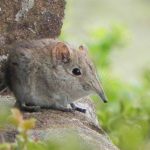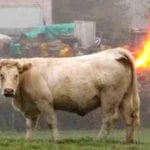 Weird Stuff
Weird Stuff  Weird Stuff
Weird Stuff  Our World
Our World 10 Archaeological Discoveries of 2025 That Refined History
 Weird Stuff
Weird Stuff 10 Fascinating Facts You Might Not Know About Snow
 Miscellaneous
Miscellaneous Top 10 Things Crypto Was Supposed to Change & What Actually Did
 History
History 10 Huge Historical Events That Happened on Christmas Eve
 Music
Music 10 Surprising Origin Stories of Your Favorite Holiday Songs
 History
History 10 Less Than Jolly Events That Occurred on December 25
 Weird Stuff
Weird Stuff 10 Funny Ways That Researchers Overthink Christmas
 Politics
Politics 10 Political Scandals That Sent Crowds Into the Streets
 Weird Stuff
Weird Stuff Ten Bizarre Facts About The Doge Meme
 Weird Stuff
Weird Stuff 10 Weird Things People Used to Do at New Year’s
 Our World
Our World 10 Archaeological Discoveries of 2025 That Refined History
 Weird Stuff
Weird Stuff 10 Fascinating Facts You Might Not Know About Snow
Who's Behind Listverse?

Jamie Frater
Head Editor
Jamie founded Listverse due to an insatiable desire to share fascinating, obscure, and bizarre facts. He has been a guest speaker on numerous national radio and television stations and is a five time published author.
More About Us Miscellaneous
Miscellaneous Top 10 Things Crypto Was Supposed to Change & What Actually Did
 History
History 10 Huge Historical Events That Happened on Christmas Eve
 Music
Music 10 Surprising Origin Stories of Your Favorite Holiday Songs
 History
History 10 Less Than Jolly Events That Occurred on December 25
 Weird Stuff
Weird Stuff 10 Funny Ways That Researchers Overthink Christmas
 Politics
Politics 10 Political Scandals That Sent Crowds Into the Streets
 Weird Stuff
Weird Stuff Ten Bizarre Facts About The Doge Meme
10 Amazing Animals That Farm
Farming is one of humankind’s brightest ideas. By cultivating plants, we could settle in one place with a reliable source of food. However, humans aren’t the only bright sparks who had this idea. In fact, in the animal world, we are relatively new to the game.
Here are 10 animals that could be argued to be farmers. Many of these relationships could be described as symbiotic and mutually beneficial, but at the end of the day, one half of this pairing is eating the other.
Related: Top 10 Animals With Creepy Behaviors
10 Leaf Cutter Ants
Ants in the Antinni tribe (including the species Cyphomyrmex longiscapus and Cyphomyrmex muelleri) depend on the fungus that they cultivate. And there are over 78 species of fungi-farming ants.
These leaf cutter ants create a colorful and intriguing image when marching along forest floors with large chunks of leaves above their heads. However, these ants don’t consume the leaves they chop up and carry home. Instead, these leaves are used to nourish their fungi gardens. Once the fungus has exhausted the nutrients it can gain from the leaves, the ants remove the waste into trash piles. The ants also secrete antimicrobials that protect the fungus.
This fungi crop forms the largest food source for the colony and feeds the ant larvae. The fungus is so important that to begin a new colony, a future queen will take a piece of the crop with her to form the basis of a new garden. The reason that they can’t just select any piece of fungus to start growing is that the ants grow their crops in climates that are unsuitable for wild fungi growth. Each colony farms a monoculture of fungus and uses bacteria to prevent unwanted, parasitic fungi from growing like weeds in their crops.[1]
9 Herder Ants
Ants aren’t just cultivating crops to feed their colonies; instead, some species tend to the equivalent of livestock. Species of ants such as Crematogaster scutellaris tend to colonies of aphids which they then milk honeydew from. Honeydew is a sweet, sugar-rich secretion that aphids produce due to the plant sap that they feed on. To harvest the honeydew, ants stroke the sides of an aphid which will then release the sugary drops.
Ants don’t just opportunistically feed on aphid colonies that they find. Instead, ants keep their herd of aphids low on the plant to ensure they have access to the juiciest parts and are sheltered under the leaves from predators. Scientists have found that chemicals in the ants’ footprints, which are also used to signal other ants and mark territory, have a tranquilizing effect on aphids. These chemicals keep aphids calm and limit the possibility of members straying from the herd.
More gruesomely, ants are also known to bite the wings off aphids to ensure they won’t leave. Over winter, some species of ants are also known to bring aphid eggs into their nests to prevent the cold temperatures from killing their flock.[2]
8 Termites
Termite farming history puts human farming timelines to shame. While humans started farming approximately 10,000 years ago, fossils show us 25-million-year-old termite fungus farms. Macrotermitine termites tend to fungus crops, similar to those described above for leaf cutter ants.
However, termites aren’t carrying big pieces of leaves to cultivate their crops. Instead, the termites deposit chewed-up portions of plant material, including leaves and wood, which are inedible for the termite. These pre-chewed pellets then become sites for fungal spores to bloom into large mushrooms.
As the fungus grows, it breaks down the cellulose and lignin, which the termites can’t digest, into a nutritious compost. This provides two forms of food for the termite as they eat the mushrooms and the compost.
By farming fungus inside their nests, termites can survive in drier climates as they have a constant source of food protected inside the mound. As the fungus breaks down parts of the plant material that termites can’t digest, it also increases how much nutrition they can derive from the vegetation around them.[3]
7 Ambrosia Beetles
Ambrosia beetles are members of the weevil family, and there are several thousand known species throughout the world. These beetles get their name from their food source—ambrosia. The word “ambrosia” means food of the gods. However, the “ambrosia” these weevils are eating is a fungus.
Ambrosia beetles bore into the wood of trees to create tunnels where they raise their larvae and store their fungal crop. During development, ambrosia beetles exclusively eat from their fungus garden. Adults in a colony are responsible for cropping the fungus, which trims parts of it to promote more growth. When it’s time for a tree change, literally, the beetles have a special organ (mycangia) to carry and sustain the fungus while they transport it.[4]
6 Littorina Snails
Moving away for a moment from high-level food production that requires cultivation and nourishment, it’s time to introduce the Littorina snail. This marsh periwinkle likes to feed on fungus; however, to create lush fields of food to feast upon, they first do something very risky. These snails go above the water, where they are more visible to predators, to gnaw at blades of swamp grass. This activity was puzzling to scientists as the swamp grass isn’t particularly high in nutritional value for the snails, and the open air is detrimental to them. However, this activity is short-term pain for long-term gain.
Damaged swamp grass covered in snail waste fertilizer is the perfect condition for fungi to grow. This fungus has a very high nutritional value for the Littorina snails. This form of farming isn’t as hands-on as previous examples that require cultivation from the animals to grow their crops. However, it is an effective way for the snails to maximize their food source.[5]
5 The Owl Limpet
This is North America’s largest limpet growing up to 4 inches (10cm) in length. These small mollusks are very territorial and defend their gardens by ramming intruders off the rocks. Their homes are important to protect as they carefully graze and cultivate algae to sustain themselves.
They maintain a mat of algae of roughly 1 square foot (1,000 square centimeters) in size through a mucous they secrete. As owl limpets graze on their algae gardens, they leave a slimy trail that enhances the growth of algae. They don’t stray too far from home because retracing their mucous trails ensures a rich growing environment.
It takes roughly three weeks for an owl limpet to establish a farm if placed in a barren environment. However, it can be devastating for the ecosystem if the limpet is removed, as the farm will be entirely devoured and left devoid of sustenance by other algae feeders in the span of just two weeks. An owl limpet can maintain the same garden through staggered feeding and mucous secretion for approximately four years.
It should be noted that only the females of the species exhibit this behavior. By contrast, the males are opportunistic feeders who frequently find their food by raiding nearby females’ farms until they are rammed off the territory.[6]
4 Damselfish
Longfin damselfish are exceptional farmers. Not only do they maintain a crop, but they also have domesticated shrimp, which help fertilize the farm.
Damselfish can only eat certain types of algae as their digestive systems cannot handle anything too fibrous. To ensure they have adequate food supplies, the fish establish territories where they weed out unwanted algae allowing their chosen crop to flourish. In many regions, the algae that damselfish eat are found exclusively inside the farms. Outside of the fish’s influence, other species of algae overgrow and outcompete it.
To protect their farms, damselfish are very quick to chase off intruders except for one tiny zooplankton—mysid shrimp. Damselfish keep swarms of the shrimp on the farms, which is important for algae growth. While the shrimp stay protected from predators, they are busy depositing waste over the farm which enriches the algae. Researchers compared damselfish farms with and without shrimp swarms and found that farms with shrimp have higher-quality algae.[7]
3 Upside-Down Jellyfish
These jellyfish go by many names; however, the Cassiopea jellyfish is probably best known for its strange habit of lying upside down. The spotted jellyfish doesn’t spend a lot of time swimming and instead farms algae (zooxanthellae) which it grows inside its body. By turning upside down, the jellyfish exposes its underside to the sun, which is essential for the algae to photosynthesize and provide nutrition.
For most species, this algae farm supplies the majority but not all of its nutritional needs. Roughly 10 to 30% of the rest of the jellyfishes’ diet comes from catching food with its tentacles. It uses stinging cells to stun zooplankton and then directs the stunned food into its mouth.[8]
2 Yeti Crabs
Deep deep in the ocean, scientists have found crabs with big, shaggy arms that resemble limbs one might find on the abominable snowman. However, these distinctive arms serve an important purpose. Yeti crabs grow bacteria on these hairy claws ensuring they have a constant supply of food.
Other creatures, such as deep-sea shrimp, have bacteria on their body which they feed on; however, the yeti crabs are different. The crabs farm the bacteria by waving their claws over the fluid that escapes from deep-sea hydrothermal vents or methane vents. This behavior washes nutrients over the bacteria in an environment totally removed from our sun-loving ways of life. Without the crab’s rhythmic, waving dance, the bacteria would exhaust its supply of methane or oxygen.
The yeti crab harvests its bacteria crop by using specialized hairs around its mouth to scrape its claws.[9]
1 Pocket Gophers
Examining the list so far, it could be celebrated that humans are the only mammal to farm. However, the final entry of today proves that we aren’t. These feisty burrowing rodents farm roots in their tunnels to supply up to 60% of their diet.
Burrowing takes a lot of energy, and pocket gophers may have found a way to make sure they have a steady food source by carefully cropping and fertilizing roots in their tunnels. Like some other entries on this list, the gophers aren’t planting the crops that they eat; however, their behavior ensures the growth and propagation of this food source.
Inside pocket gopher tunnels, the air is moist, and the soil is packed full of nutrients from gopher waste. Roots of nearby vegetation flourish in these conditions. The gophers crop these nutritional intrusions, which promotes further growth.[10]








